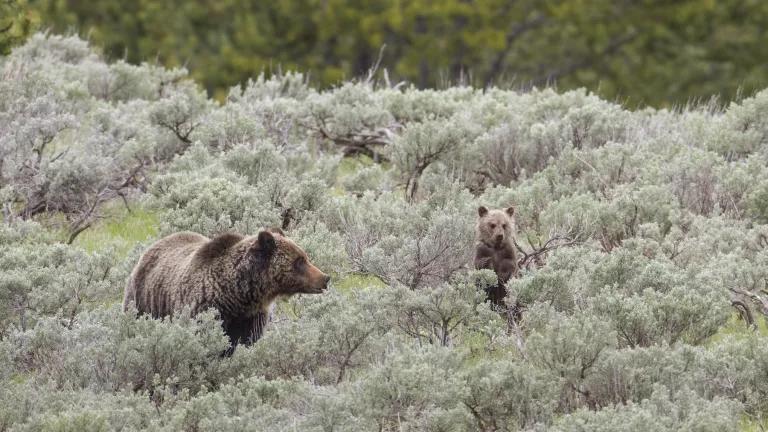
We're excited to announce that the cable television premiere of NRDC's film Wild Things will appear on Pivot TV next Wednesday, May 13, at 9 p.m. Eastern. Wild Things documents Wildlife Services' use of traps, snares, poisons and other indiscriminate and inhumane methods to kill tens of thousands of wolves, bears, mountain lions and other native predators--intentionally and unintentionally--in the name of protecting livestock each year.
What we hope viewers find inspiring about the film is that it not only focuses on the problems inherent in using lethal measures to respond to conflicts with wildlife, but presents practical, alternative solutions as well. Wild Things profiles several sheep and cattle ranchers using an array of nonlethal measures like electric fencing, riders on horseback, and guard dogs to successfully protect their animals. Not only are these measures effective at keeping livestock safe, but, because they are proactive rather than reactive, they prevent conflicts from occurring in the first place.
It's no surprise that these strategies work. Some, like guard dogs and shepherds, have been used for thousands of years. And many have proven effective in both controlled and real-world situations. For example, in a 2010 study, researchers with Wildlife Services' National Wildlife Research Center concluded that there is a "high probability" that electrified "fladry"--rope or wire draped with strips of cloth--will effectively prevent wolves from entering small pastures.
Confirming that finding, one rancher I work with in Montana recently described watching for weeks as wolves occasionally tested and paced along--but never crossed--the fladry we'd erected earlier around his calving pasture. Then, one day, he moved the cattle to an adjacent pasture that was not protected by fladry. Within hours, the wolves were inside the pasture and among the cattle (though no cattle were attacked). We quickly helped to put up fladry around the new pasture; the wolves once again stayed out.
Similarly, my colleagues with the Oak Creek Neighborhood Coalition in Corvallis, Oregon, recently had a conversation with a sheep rancher who decided to try using guard dogs, rather than his rifle, to protect his sheep from coyotes. The rancher said he had lost a lamb and a ewe just before getting the dogs, but that since the dogs (who he named Rambo 1 and Rambo 2) had arrived he hadn't lost a single animal, and was so impressed he was thinking of getting another (presumably Rambo 3). He said the dogs were particularly helpful at night, when most of the problems had been occurring.

We're starting to hear more of these stories. The ranchers profiled in Wild Things reject the idea, so common for centuries, that "the only good carnivore is a dead one." Ranching communities in Montana and elsewhere are coming together to hire riders, install fencing, remove livestock carcasses, and take other steps to protect their animals while giving wolves, bears, coyotes and other predators a chance to share the landscape.
And while NRDC has long been critical of Wildlife Services' predator control operations, we're particularly encouraged with the recent leadership that Montana Wildlife Services has shown in organizing workshops focused on the science and application of nonlethal protection measures. An agricultural publication recently described the last workshop the agency held in Dillon, Montana, as a "landmark" and a "success."
Another workshop, in partnership with the Confederated Salish and Kootenai Tribes and Montana State University Extension Service, is scheduled to be held in Polson later this month (click here for details). Whether you run a thousand head of cattle, have a few chickens in your backyard, or would just like to listen to a diverse panel of experts share their knowledge and experience, all who are interested in learning more about protecting their animals through nonlethal means are welcome to attend.
As Wild Things acknowledges, nonlethal tools are not a panacea, and in rare situations habituated or chronically depredating animals may need to be removed. But as the film also makes clear, time after time, among a wide range of landscapes, predators and situations, these methods continue to impress, and livestock owners continue to adopt them as their own.
Throughout the film, Wild Things challenges conventional views, applies science to real world solutions, and raises a fundamental question: if we can protect our livestock without killing wildlife, shouldn't we?
You can watch Wild Things on Pivot TV on May 13 at 9:00 p.m. Eastern. To find your Pivot TV channel, visit: www.pivot.tv/interstitial/channelFinder (and you can take action at www.wildthingsmovie.org).



